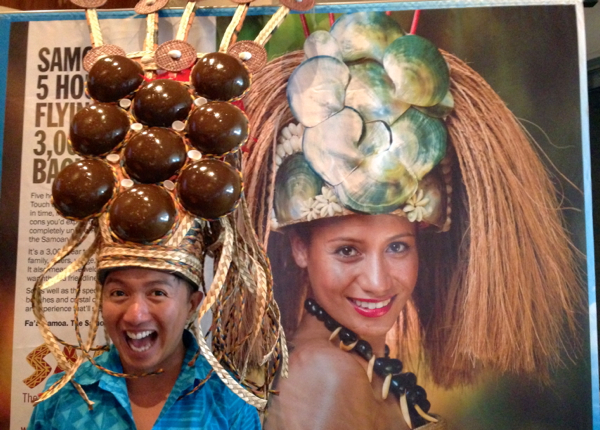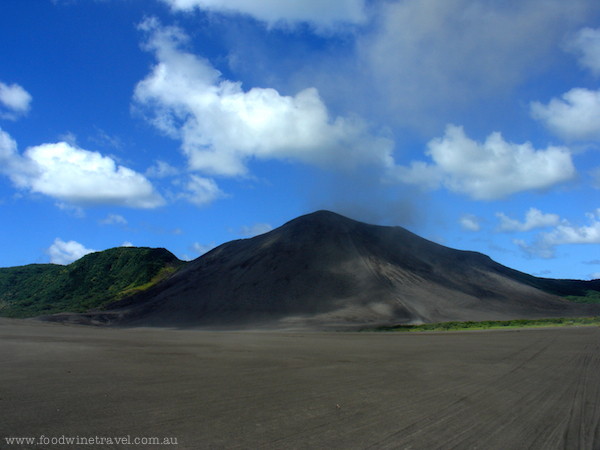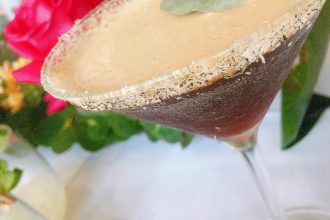Published in Endless Vacation.
“It had a magnificent appearance with its immense sail of white mats; the pennants streaming from its yard denoted it at once as belonging to some great chief … its velocity was almost inconceivable.”
That our drua, the Fijian double-hulled canoe taking us for a leisurely sail aroundSuva harbour, was nowhere near as big or as fast as the one described by American Commander John Wilkes in 1845, merely highlighted what an amazing sight the original canoes must have been.
The original waqa tabu (sacred canoes) were built to carry over 300 people with provisions to last two months or more as they traversed the Pacific. Most often used for war, the sight of one appearing on the horizon was said to strike dread and fear into even the bravest heart.
The Tabu Tabu Soro (“never give up”) is an accurate replica of the double-hulled canoes of old (in everything but size and a few unobtrusive concessions to modern technology). It offers a unique sailing experience on the clear, blue waters Fiji is famous for.
With the Suva skyline in the distance, it set sail from the Tradewinds marina as two agile Fijians cleverly changed direction by moving the sail from one end to the other.
This fascinating insight into Fiji’s maritime heritage provides a different experience for the visitor who doesn’t want to sit around all day on a beach, sipping a cocktail, as tempting as that might be.
For a taste of a different culture,Fijihas much to offer. Just three to four hours flying time from Australia (depending on the direction), it consists of more than 300 sun-drenched tropical islands in the Pacific.
Most visitors fly into Nadi on the dry north-western side of Viti Levu: the capital city,Suva, is on the wetter, lusher south-eastern coast. The two main roads between them,Queens RoadandKings Road, form a complete circle of the island.
Since a considerable part of theKings Roadis unsealed, most visitors take theQueens Roadwhich follows the Coral Coast, a scenic route with some of the island’s loveliest beaches.
A short drive from Nadi, make a pit stop at Sonaisali. Reached by a two-minute boat ride from the mainland, it hasFiji’s only Paintball field. The tropical flora adds to the unique atmosphere of the “battleground”.
A little further along, at Sigatoka, it would be easy to drive straight past the incredible sand dunes which are only partially visible from the road, concealing their enormous size and imposing beauty.
We stopped to ask directions from one of the locals and were immediately given a guided tour to the top of the dunes. Accompanying our guide was a lad of six or seven who slid down one of the dunes, the height of a three-storey building, as though it was a slippery slide.
Skeletons and pottery fragments are sometimes found here – a tall robust people inhabited the dunes about 1800 years ago. We found no antiquities but the spectacular views of the coastline from the top of the dunes made the climb worthwhile.
Also near Sigatoka is another attraction which provides a fascinating glimpse into Fijian history, as well as providing some superb views of the lush Sigatoka valley. Tavuni Hill Fort is an archaeological site with the remains of a fort established by a Tongan chief who set sail forFijiin the late 1700s to avoid a dispute inTonga’s reigning family.
The site is beautifully maintained, and a credit to nearby villagers for its professional presentation. Our guide, Albert Kurivitu, is full of fascinating tales, proud of his heritage but casual in a typically Fijian way. I picked up some pottery fragments and asked Albert how old they were. His reply, without even blinking an eyelid: “Oh, about 2000 years.”
At the end of Queens Road,Suva retains some lovely old colonial buildings and is about the only place in Fiji where you will see a building taller than a palm tree. The Fiji Museum here is highly recommended, with its collections of war clubs, ivory necklaces, cannibal forks and numerous utensils and tools.
For an insight into how the locals live, visit the Municipal Market where the Polynesian, Chinese, Indian and Fijian vendors hawk fish, meat, fruit and vegetables, kava, coconut oil and other household supplies.
One of the highlights of our stay was hiring a four-wheel-drive to travel fromSuvaback to Nadi along the Kings Road, which winds over rugged mountains through villages that have changed little in hundreds of years. It takes about six hours, not including stops, to do the 300km trip, about 100km of which is unsealed.
Various organised excursions are available to villages in the island’s mountainous interior, including several day-trips by motorised boat to villages upstream from Nadi andSuva. Our trip up the Navua River to the village of Nukusere took us through deep gorges, past cascading waterfalls and women doing their washing at the water’s edge.
While there are countless cruise companies plying the beautiful waters around Fiji, some offer a special experience. Fiji Windjammer Barefoot offers three or four night trips on a 108ft tall ship which visits islands and traditional villages, and allows you to go fishing, trek overland, snorkel and swim with manta rays. Accommodation is on land in bures with sunset swims, lovo feasts and nightly entertainment.
South Sea Cruises does some great trips on its two-masted wooden schooner, Seaspray, that featured in a television show. One of its most popular cruises is to a small uninhabited island, Modriki, where you can spend a day or half day swimming and snorkelling.
Blue Lagoon Cruises does a six-night historical and cultural cruise which goes to far-flung destinations that few tourists venture to.
This fascinating trip takes in Levuka, on the island of Ovalau, once the capital ofFijiand still with an air of colonial glory. Ovalau can also be reached in a 10-minute flight fromSuvaand is worth the short hop for a completely different Fijian experience.
If it’s thrills and excitement you’re after, jet boat rides on the Nadi River leave daily from Denarau marina. Take a dive with the Dive Centre on Tokoriki island and you’ll see blue coral, thought to be extinct in theFijiIslandchain until it was recently discovered on a reef just off the resort. The coral is a beautiful sky blue, in contrast with the white that hard coral usually is.
It would be difficult to find a friendlier and more welcoming race than the Fijians, whose wide grins and constant greetings of Bula (hello) are infectious.
It is hard to imagine that not so very long ago, cannibalism was rife on these islands. Now as they farewell their visitors with the nostalgic strains of the “Isa Lei”, an old song of love and the sorrow of parting, the invitation to return is warm and genuine.
© Christine Salins




